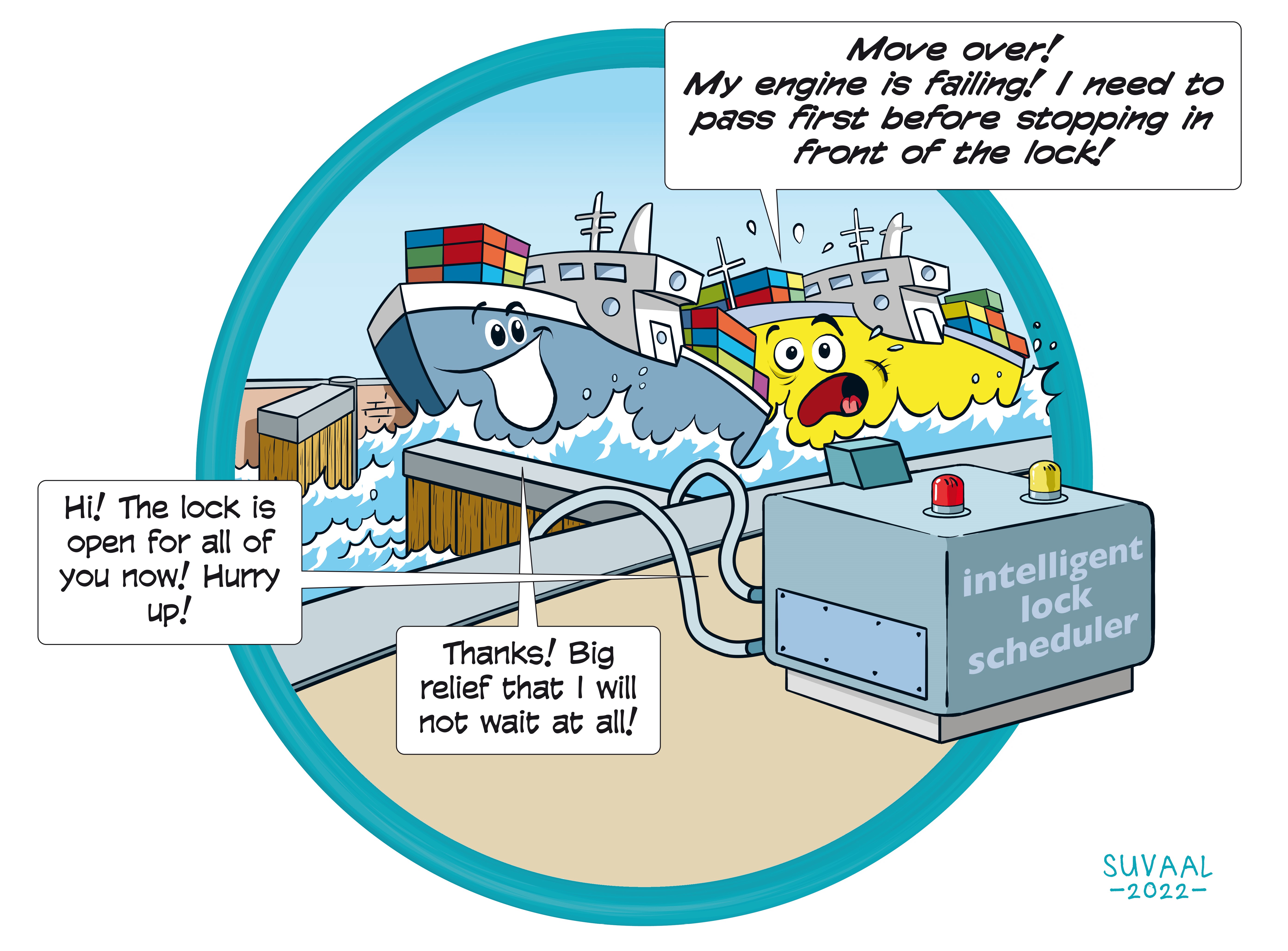SMART INLAND SHIPPING
Research Themes: Software Technology & Intellligent Systems, Water & Maritime


A TRL is a measure to indicate the matureness of a developing technology. When an innovative idea is discovered it is often not directly suitable for application. Usually such novel idea is subjected to further experimentation, testing and prototyping before it can be implemented. The image below shows how to read TRL’s to categorise the innovative ideas.
Summary of the project
Transport of cargo and goods put an enormous burden on our land based transport networks and the environment. Inland waterway transport (IWT) is characterized as sustainable, reliable, energy efficient and has a capacity for increased use. This will only happen if we can make this mode of transport more economically competitive, safe and efficient. The researcher is looking into various aspects related to increasing the efficiency and enhancing the safety of IWT using AI aiming at reaching higher levels of autonomy in all IWT operations.
On the one hand she is looking into how the interaction between the vessels and the infrastructure can best be scheduled. Although this can be approached as a logistics challenge – getting the vessel including cargo from A to B as fast as possible there are a lot of external factors that come into play and that need to be taken into account. Think of environmental factors such as water levels or the interaction with other infrastructures such as bridges or locks that open at specific times. The researcher is working on the design of software-based agents, the schedulers, which decide the time that the vessels pass through the bridges and locks such that there is minimum to zero delay in their time plans and efficient use of infrastructure. The dynamic scheduling of vessels and infrastructure prevents traffic along the waterways and creates a ‘blue wave’.
In order to realize dynamical scheduling of IWT vessels and infrastructure, and safe navigation, enriched sensor information is required. What if sensors become faulty? So another venture for the researcher is to look at the sensor fault diagnosis. Currently ships generate a lot of data; GPS, radar, Lidar etc. This data can be used, not only to determine a ship’s location at a given point in time, how fast it is sailing, in which direction, but also where it needs to be at a given moment and what path it should sail in order to get there. In the case that this sensor information is faulty this will directly affect the operation and safety, of the ship itself but also of the other ships that are on the same course or in the vicinity. The researcher designs model-based monitoring agents for estimating the expected system operation, for detecting any unexpected deviation and for isolating the faulty sensors. So you know what to expect even under uncertainty duel to unknown physical and operational environment (e.g. unknown variable water depth, wind, unknown small boats).
What's next?
The next step for the researchers is to increase the focus on safety, especially how to constrain the propagation of sensor fault effects in different systems and over different aggregation levels. How can you deal with the safe coordination between interconnected transport systems under uncertainties and unexpected events? The necessary condition is to ensure the safe operation of every autonomous maritime transport system involved. The sufficient condition is to ensure the safe interaction of the interconnected systems.
With or Into AI?
Both
Dr. Vasso Reppa
Mr. Abhishek Dhyani
Dr. Pablo Segovia
Prof.dr.ir. Rudy negenborn
Faculties involved
- 3ME
